- Unit14 Jul 2014
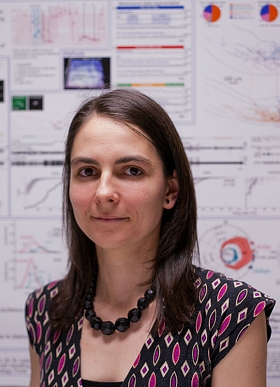
Awards are given to Affiliate Members of The Physiological Society every year sponsored by Pfizer in recognition of excellence in research presented at the Society’s annual Main Meeting, Physiology in six categories: Cardiac & Respiratory Physiology, Cellular & Integrative Neuroscience, Epithelia & Membrane Transport, Human & Exercise Physiology, Metabolism & Endocrinology and Vascular & Smooth Muscle Physiology. Candidates are registered for a higher degree by research in a department of a higher education institute in the UK or the Republic of Ireland. Submitted abstracts are judged first by a Scientific Advisory Board and selected papers are presented in a 10 min oral communication.
This year’s Pfizer Prize in Cellular & Integrative Neuroscience was awarded to Unit DPhil student Linda Katona for her paper “Somatostatin-expressing interneurons: segregation of network operations in the hippocampus of freely moving rats”, which she presented at the 2014 meeting 30th June - 2nd July at The Queen Elizabeth II Conference Centre in London. Linda has revealed the cell-type selective synaptic connections of several distinct GABAergic, somatostatin-expressing interneurons, and defined their firing during rhythmic neuronal network activity in the rat hippocampus under the joint supervision of Professors Peter Somogyi and Thomas Klausberger and she concluded this work in a recently submitted DPhil thesis.
- Unit13 Jul 2014
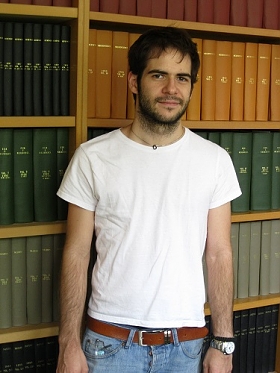
Mr. Manuel Valero joins the group of Professor Peter Somogyi for three months under the supervision of Dr Tim Viney. He studies for a PhD in the group of Dr Liset Ménendez de la Prida at the Cajal Institute in Madrid, (http://www.hippo-circuitlab.es) where he applies an arsenal of techniques including multi-site and single-cell recordings in anesthesiated and awake animals, and data analysis to explain hippocampal neuronal activity. He explores the function of hippocampal and para-hippocampal circuits in the normal and the epileptic brain, with a special emphasis in the cellular and synaptic rules that govern circuit dynamics. In the Unit he will learn histological analysis and neuronal reconstruction.
- Unit11 Jul 2014
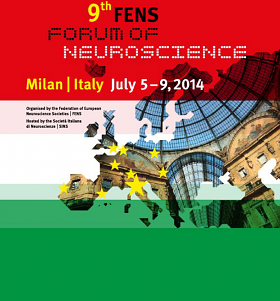
Members of the Unit contributed to the FENS Forum 2014 held in Milan, Italy.
Dr. Peter Magill presented a symposium lecture, entitled "Functional dichotomy in the striatal-pallidal axis".
Posters given by Unit members at the Forum include:
Bazelot, M., Bocchio, M., Fischer, D., Ferraguti, F., Capogna, M. (2014) Hippocampal theta mediates disinhibition of mouse amygdala principal cells via GABAB receptors.
Bocchio, M. & Capogna, M. (2014) Serotonin switches the firing mode of nitric oxide-expressing neurons of the mouse lateral amygdala.
Gridchyn, I., Dupret, D. & Csicsvari, J. (2014) Hidden Markov model for the decoding of spatial features.
Huerta-Ocampo, I. & Bolam, J.P. (2014) Quantitative analysis of the corticostriatal and thalamostriatal systems in the z-Q175 mouse model of Huntington’s disease.
Mena-Segovia, J., Dautan, D., Huerta-Ocampo, I., Witten, I.B., Deisseroth, K., Gerdjikov, T. & Bolam, J.P. (2014) Cholinergic neurons in the brainstem topographically innervate and differentially modulate neurons of the striatum and nucleus accumbens.
Katona, L., Lapray, D., Viney,T.J., Oulhaj, A., Borhegyi, Z., Micklem, B.R., Klausberger, T. & Somogyi, P. (2014) Sleep and movement differentiate hippocampal network operations of two types of somatostatin-expressing GABAergic interneuron.
McNamara, C., Campo-Urriza, N. & Dupret, D. (2014) Sleep reactivation of hippocampal cell assemblies in mice.
- Unit30 Jun 2014
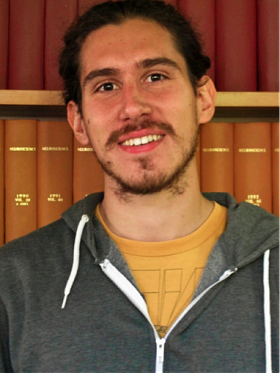
The MRC Unit was well represented in this year’s Paton Prize Lectures, with three of our D.Phil. students (Marco Bocchio [pictured to the right], Farid Garas and Dimitrios Kotzadimitriou) each giving a presentation about their ongoing thesis research. Marco, a second-year student in the Capogna Group, was jointly awarded second prize for his presentation entitled “'Serotonergic modulation of the mouse basolateral amygdala: implications for emotional behaviour and brain state”.
The Paton Prize is named in honour of the late Professor Sir William Paton, former Head of the University Department of Pharmacology, and is awarded annually on the basis of general research excellence, the quality of presentation and the ability to deal with the adjudicators’ questions.
- Unit12 Jun 2014
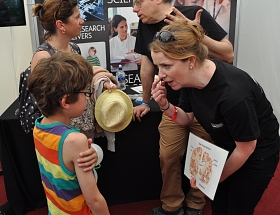
Unit senior scientists David Dupret and Marco Capogna, and Unit D.Phil. student Colin McNamara, all enthusiastically served on the MRC stand at the Cheltenham Science Festival this year, which ran from 2nd to 7th June. The Unit team were joined by many other MRC-funded staff and students from across the UK, and all were ably coordinated by Erika Doyle from MRC Harwell. With a very large number of visitors, the festival attendance reached another record high. This year at the MRC stand, special emphasis was placed on the brain, especially in relation to dementia and memory disorders. David commented “It was a thoroughly enjoyable experience for everyone involved. The activities and discussions really engaged people, and several teachers told me that they would take away ideas from the stands for future use in the classroom”.
- Unit10 Jun 2014
d594.jpg?itok=PiZcmmPu)
Our congratulations go to Unit D.Phil student Alessia Manganaro, who successfully defended her D.Phil. thesis, entitled “Functional differentiation along the dorso-ventral axis of the hippocampus”, on Friday 29th May 2014.
Alessia's examiners were Prof David Bannerman (Department of Experimental Psychology, University of Oxford) and Dr Colin Lever (Durham University). Alessia was supervised by Prof Jozsef Csicsvari and Prof Peter Somogyi.
Alessia is pictured with Prof Csicsvari, and celebrating with her student colleagues.
- External9 Jun 2014
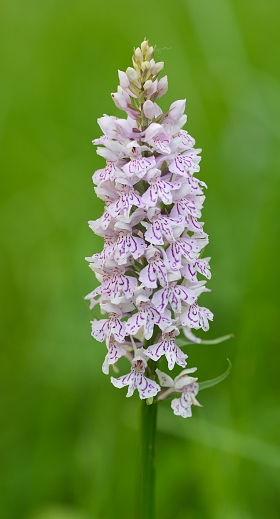
The Unit's wildflower meadow is blooming. The flowers are attracting a large number of bees and other insects. The teazles are coming into flower, as the floxgloves are finishing.
The wildflower meadow has for the second year its star performer in flower again: a Common Spotted Orchid, Dactylorhiza fuchsii. Our flower is at the paler end of the spectrum for this species, with white flowers and pink patterns on the labella.
This is joined for the first time by another flowering orchid, a Southern Marsh Orchid, Dactylorhiza praetermissa. This has lilac-coloured flowers, with a paler centre part of the labella with small purple spots.
With the White Helleborine, Cephalanthera damasonium, that flowered in 2012, this makes three orchid species that have flowered in our modestly-sized meadow.
If you wish to view the orchids, please take care not to trample the other plants.
- Unit2 Jun 2014
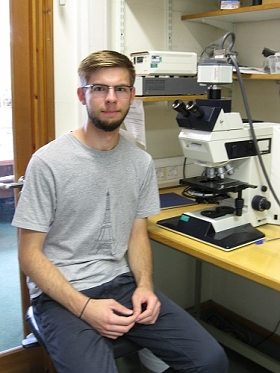
We are delighted to welcome back Artur Koroknai for a short visit to Professor Somogyi’s laboratory. Artur is a previous winner of the Oxford Ramon y Cajal Scholarship. He won with his essay: "Does the organization and function of the nervous system reflects its phylogenetic developmental level? Or… Why humans are causing the sixth great extinction of life in the history of the Earth?"
Artur is in his second year reading medicine at the Semmelweis University, Faculty of Medicine and during his time in the Unit he will be working with Linda Katona studying the role of cell-type specific synaptic organisation of hippocampal and septal neurons recorded in vivo during behaviour. He will carry out immunohistochemistry for the investigation of neurons using light and epifluorescence microscopy and he will analyse the spike trains of the recorded cells in order to identify behaviour-related firing patterns.
- Unit27 May 2014
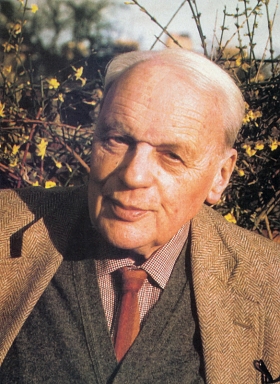
On the 24th April 2014 a Symposium was held to celebrate the 20th Anniversary of the Blaschko Fellowships, and the life of Hugh Blaschko, FRS. A selection of the lectures are available below as videos. For 'full-screen' and other options, please click on the title in the top left of the player to view on YouTube.
- Unit26 May 2014
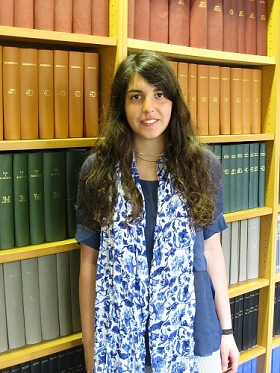
Lydia Oikonomidis joins the Group of Dr. Marco Capogna for her a laboratory rotation as an MSc Neuroscience student at Oxford University. The aim of her laboratory work is to determine whether fear-conditioning in mouse increases the expression of a molecular marker of neural activation (c-fos) in GABAergic neurons of the basolateral amygdala which also express 5-HT2A receptors. This research activity is performed in collaboration with the groups of Dr. David Bannerman (Experimental Psychology) and Prof. Trevor Sharp (Pharmacology). Lydia received a BSc in Psychology University of York, where she previously studied eye-tracking in human vision.